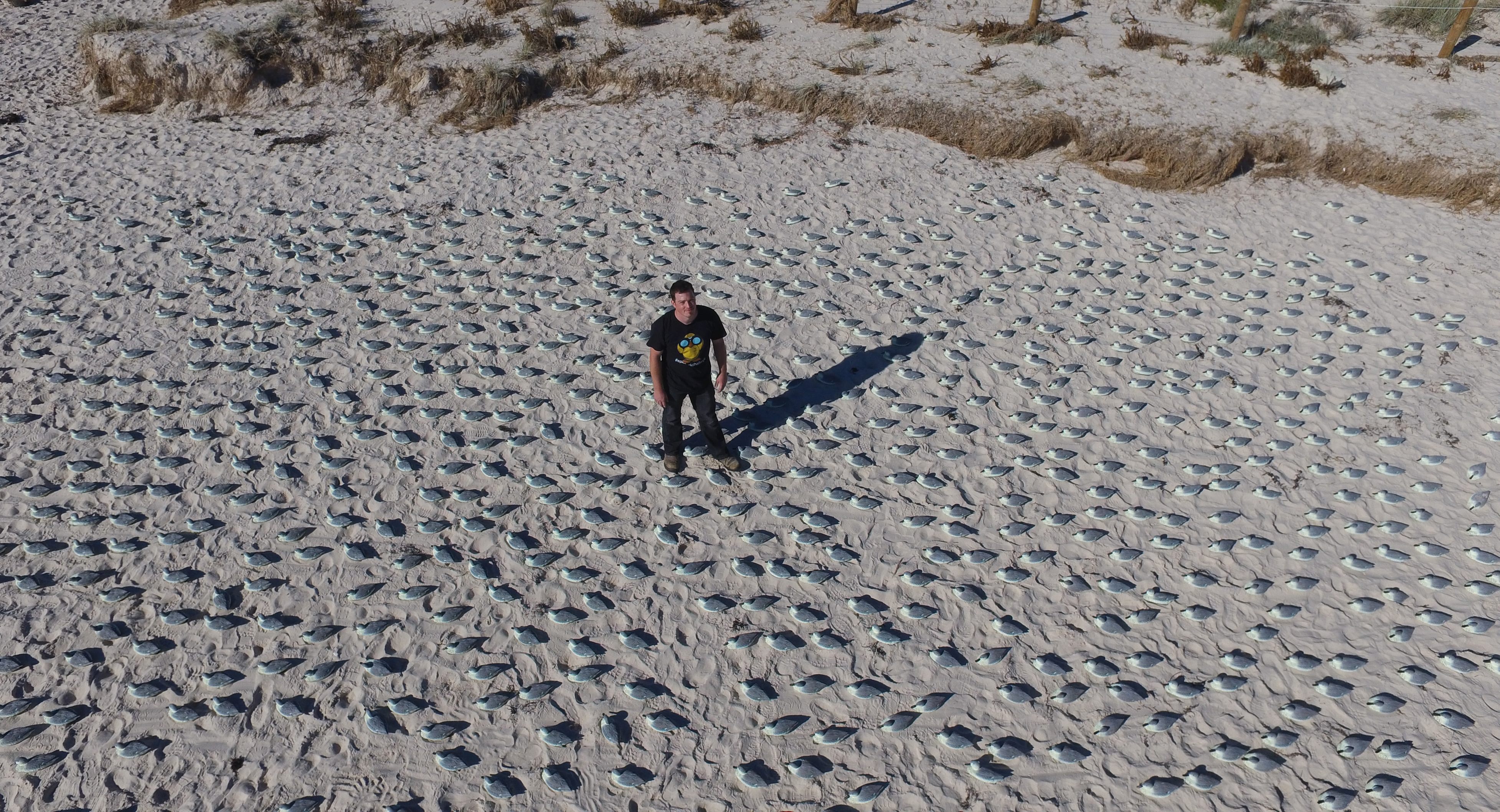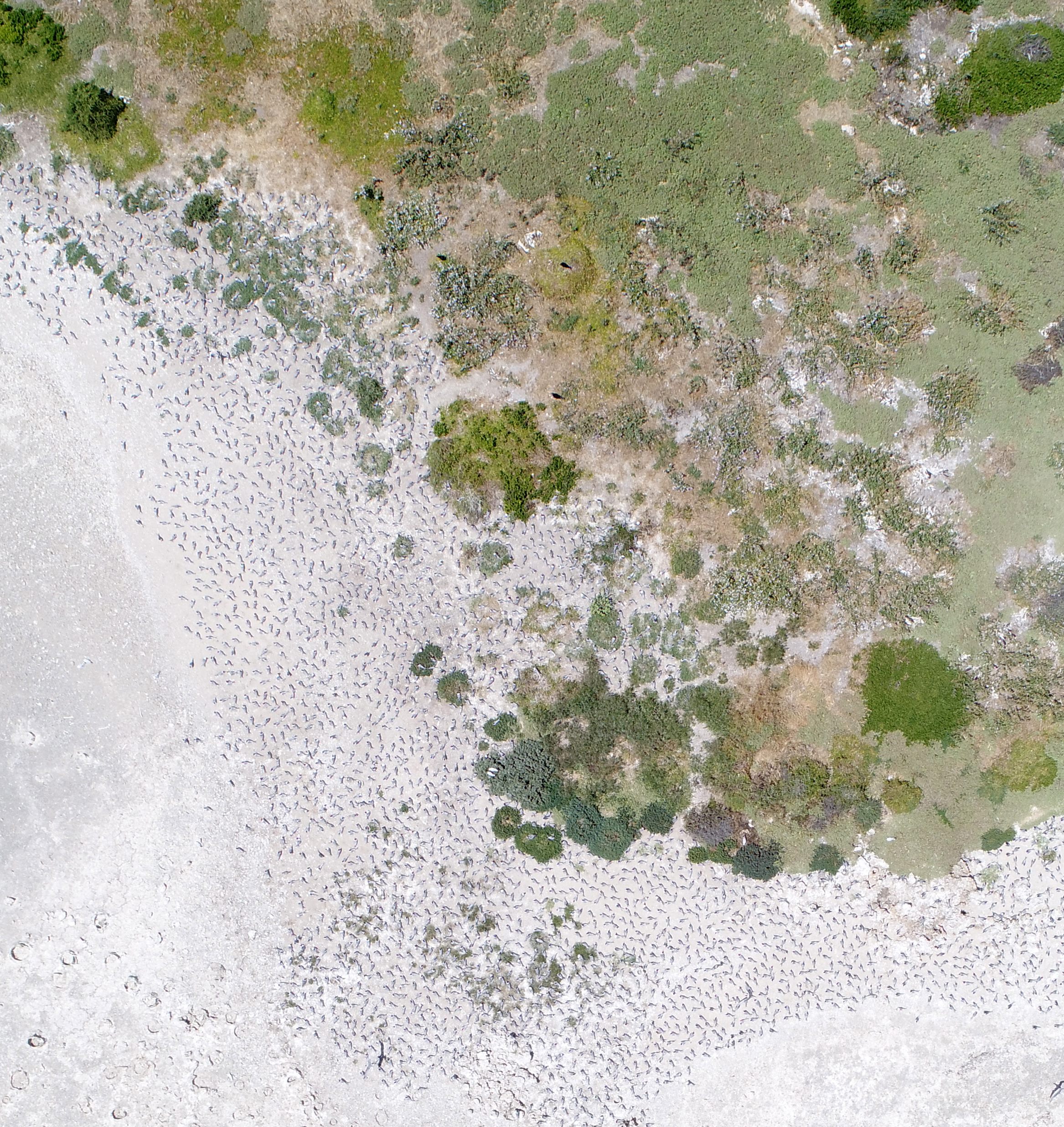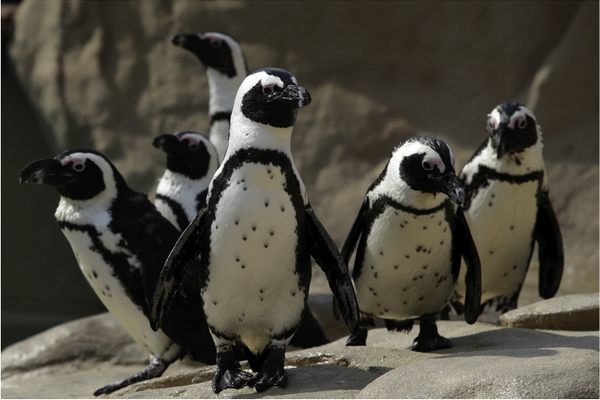Why Drones Are Counting Thousands of Decoy Ducks
To test the gadget’s data skills, researchers speckled a beach with fake fowl.

It was a clear autumn day in Port Willunga, Australia. The sand was golden, the sun was high. The beach was speckled with colonies of birds at rest in front of the waves. Except they weren’t birds, exactly—they were plastic decoy ducks. Thousands of them. And a drone whirred above in an effort to tally them up.
Drones have become a common tool in researchers’ belts. The aircraft can be outfitted with sensors and other instruments; piloted remotely, they can climb or swoop to crannies or canopies that would be hard to access by foot. From high off the ground, they can telegraph information about ecology or activities across an expansive landscape.
But as scientists zip these gadgets through the sky, a few questions remain about how reliable the data is. “Drones have been used to monitor different animals that can be seen from above, including elephants, seals, and nesting birds. But, until now, the accuracy of using drones to count wildlife was unclear,” said Jarrod Hodgson, a Ph.D. candidate from the University of Adelaide’s Environment Institute and School of Biological Sciences, in a statement.

To tackle the accuracy question, Hodgson and his collaborators stippled the shoreline with those fake fowl. Unlike flesh-and-feather birds, which have a habit of taking to the air or water, decoy birds stay put. Stationary objects are easier to count, and a known quantity was key to measuring the accuracy of a counting tool.
The researchers simulated 10 colonies of greater crested tern, Thalasseus bergii, each comprised of somewhere between 463 and 1,017 members. Experienced ecologists hoofed it over the shore to conduct a census by foot and binoculars. Meanwhile, the drone plunged and rose, snapping photos from various heights. Citizen scientists were tasked with counting the decoy ducks from these pictures, and the researchers also devised an algorithm to tally up the numbers.
Overall, the drone’s counts were much more precise than the ground counts, the researchers report in a new study in Methods in Ecology and Evolution. This accuracy increased with higher-quality images.
Decoy ducks aren’t likely to be rattled by drones, of course, but in other circumstances, researchers have wondered whether these aircraft bug the wildlife they’re dispatched to study. As Popular Science reported last year, one group of researchers noted that bears’ heart rates spiked when drones buzzed near them. Another drone-flying team noticed that murre birds would flee their nests when the machine hovered too close, sometimes toppling the eggs or fledglings in the process.

Conducting a bird census by foot can also be disruptive, David Bird, an emeritus professor of wildlife biology at McGill University, told Popular Science. “While you’re doing that, you’re disturbing the hell out of the birds,” Bird said. “They’re getting off their nests and flying around and crapping on people and pecking their heads so you have to wear hard hats, and people also step on the nests.” Foot traffic, however ginger, can trample ecologically sensitive areas. Drones aren’t a perfect solution, Bird also conceded—a gull thwacked his team’s drone from the sky and into the ocean. To keep things a little less exciting, future efforts might entail climbing to higher altitudes, keeping a greater distance, and painting the drone to resemble another type of bird. The key is to get the best data possible, with the smallest degree of intrusion.
Hodgson said there’s a compelling case for drone-assisted research, especially as species’ environments change dramatically and rapidly. (Already, researchers are using drones outfitted with thermal sensors to track how thawing ice affects Arctic polar bears.) “Our results show that monitoring animals with drones produces better data that we can use to proactively manage wildlife,” he said. Decoy ducks aren’t in any particular danger, of course, but they can help researchers refine their tools for the real thing.






















Follow us on Twitter to get the latest on the world's hidden wonders.
Like us on Facebook to get the latest on the world's hidden wonders.
Follow us on Twitter Like us on Facebook